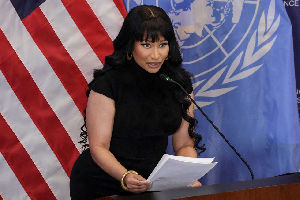Business News of Wednesday, 19 November 2025
Source: www.guardian.ng
‘Surge in new tariffs comes with measures to increase trade’
Trade covered by tariffs in G20 economies increased about four times as much from mid-October 2024 to mid-October this year compared to the prior reporting period, marking the largest increase in the history of World Trade Organisation (WTO) trade monitoring.
At the same time, economies made trade easier by twice as much in value terms over this period, according to the WTO’s latest report on trade measures in the G20 issued over the weekend.
G20 merchandise imports worth $2.6 billion, or 14.3 per cent of their total, were affected mostly by tariffs along with other measures introduced in the time frame, more than four times the $599 billion recorded in the preceding period.
Over the same period, G20 economies also introduced a large number of new trade-facilitating measures and mostly refrained from retaliation, favouring dialogue and reducing trade barriers instead.
G20 economies introduced 184 trade-facilitating measures on goods, covering trade estimated at $2.1 billion, nearly double the $1.1 billion recorded in the last report.
Commenting on the development, WTO Director-General, Dr Ngozi Okonjo-Iweala, said even as the global trading system endured the most severe disruptions in 80 years, trade was showing considerable resilience as most WTO members continued to trade normally with each other.
She explained that this latest monitoring report gave the WTO new figures to illustrate the realities on the ground.
“We see protectionist measures affecting a substantially higher share of world trade. At the same time, we see a lot of trade-facilitating measures, reflecting a desire by members to reduce trade costs even as barriers rise elsewhere.
“It’s welcome that we see ongoing dialogue instead of escalating retaliation. WTO members should seize this moment to put trade on a firmer footing by reforming and repositioning the WTO,” she added.
WTO economists estimate world merchandise trade growth at 2.4 per cent in 2025 and at 0.5 per cent in 2026, with stronger-than-expected trade growth in H1 2025 driven by import frontloading, strong demand for AI-related products and continuing trade growth among most WTO members, notably developing economies.
The new G20 report notes increased dialogue among trading partners and efforts to negotiate trade solutions.
With respect to services, G20 economies introduced 52 new measures, with over two-thirds aimed at facilitating trade.
Sports











